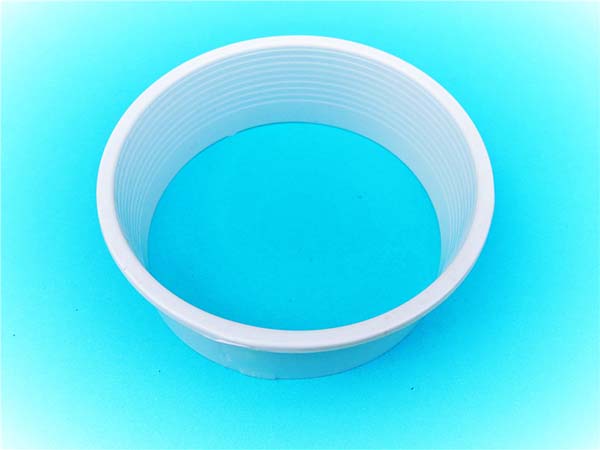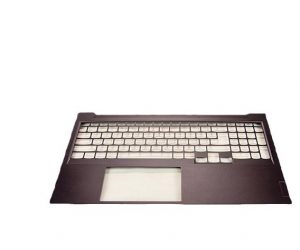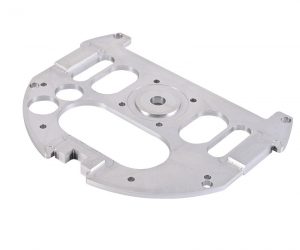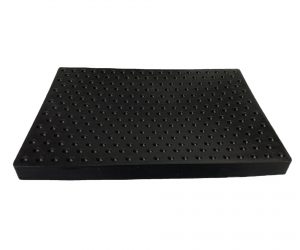Introduction
In the realm of materials, Baquelite board holds a unique position. For engineers, hobbyists, and those in various industries, understanding Baquelite boards is crucial. This article aims to comprehensively cover everything about Bakelite boards, from their properties to applications, and answer common questions to help you make informed decisions regarding their use.
What is a Bakelite Board?
Definition and Composition
A Bakelite board is made from Bakelite, which is a thermosetting plastic. It is synthesized through a reaction between phenol and formaldehyde under specific conditions. The resulting material is a cross - linked polymer, giving Bakelite its characteristic properties. The board is formed by compressing layers of paper or fabric impregnated with Bakelite resin under high pressure and heat. This process binds the layers together, creating a rigid and durable board.
Invention and Historical Significance
Leo Hendrik Baekeland invented Bakelite in 1907, marking a revolutionary moment in the history of materials. Bakelite boards quickly found applications in various industries due to their novel properties. They were among the first synthetic materials to be widely used, replacing traditional materials like wood and metal in many applications. Their use became especially prominent during the early to mid - 20th century, when the demand for new, reliable materials was high.
Properties of Bakelite Boards
Mechanical Properties
Strength and Rigidity
Bakelite boards are known for their high strength and rigidity. They can withstand significant mechanical stress without deforming. For Yigu Technology example, a standard Bakelite board can have a flexural strength of around 100 - 150 MPa. In comparison, a common plywood board might have a flexural strength of 30 - 50 MPa. This high strength makes Bakelite boards suitable for applications where structural integrity is crucial.
Impact Resistance
While Bakelite boards are strong, they are relatively brittle and have lower impact resistance compared to some other materials. However, their performance can be enhanced by adding certain fillers or reinforcements during the manufacturing process. For instance, adding glass fibers to the Bakelite resin can improve its impact resistance by up to 30 - 40%.
Thermal Properties
Heat Resistance
One of the most remarkable properties of Bakelite boards is their excellent heat resistance. They can withstand temperatures up to 150 - 200 °C without significant softening or degradation. This is far superior to many common plastics. For example, polyethylene - based boards start to soften at around 80 - 120 °C. Bakelite boards' heat resistance makes them ideal for applications in high - temperature environments, such as in electrical equipment near heat - generating components.
Thermal Conductivity
Bakelite boards have a relatively low thermal conductivity, typically in the range of 0.1 - 0.3 W/(m·K). This means they are good thermal insulators. In applications where heat transfer needs to be minimized, Bakelite boards can be used effectively. For Yigu Technology example, in some industrial ovens, Bakelite boards are used as insulation materials to prevent heat loss.
Electrical Properties
Insulating Properties
Bakelite boards are excellent electrical insulators. Their volume resistivity can be as high as 10¹² - 10¹⁴ ohm - cm. This property is crucial for their use in the electrical industry. In comparison, materials like aluminum, which is a good electrical conductor, has a resistivity of around 2.82 x 10⁻⁸ ohm - cm. Bakelite boards are commonly used in electrical switchboards, circuit breakers, and other electrical components to prevent the flow of electricity and ensure safety.
Dielectric Strength
They also have a high dielectric strength, usually in the range of 10 - 30 kV/mm. This allows them to withstand high - voltage electrical fields without breaking down. In high - voltage electrical applications, such as in power transformers, Bakelite boards are used as insulating barriers.
Chemical Resistance
Bakelite boards exhibit good chemical resistance. They are resistant to many common chemicals, including acids, alkalis, and solvents. For example, they can withstand exposure to dilute hydrochloric acid and sodium hydroxide solutions without significant corrosion. However, they are not completely impervious to all chemicals. Strong oxidizing agents like concentrated sulfuric acid or nitric acid can attack and degrade Bakelite boards over time. Their chemical resistance makes them useful in chemical processing plants, where they can come into contact with various chemical substances.
Production Process of Bakelite Boards
Raw Materials
The main raw materials for Bakelite boards are phenol, formaldehyde, and a filler material. Phenol is derived from coal tar, and formaldehyde is produced from methanol. The filler material can be paper, fabric (such as cotton or glass fiber), or other organic or inorganic materials. The choice of filler affects the final properties of the Bakelite board. For example, using glass fiber as a filler can increase the board's strength and impact resistance.
Manufacturing Steps
Resin Preparation
First, phenol and formaldehyde are reacted in the presence of a catalyst to form Bakelite resin. The reaction conditions, such as temperature, pressure, and the ratio of reactants, are carefully controlled to obtain the desired resin properties. This initial resin is in a liquid or semi - liquid state.
Impregnation
The filler material, such as paper or fabric, is then impregnated with the Bakelite resin. This can be done by dipping the filler into the resin bath or by using a spraying process. The goal is to ensure that the filler is thoroughly coated with the resin.
Lamination and Pressing
The impregnated filler layers are stacked together and placed in a mold. The mold is then subjected to high pressure and heat. The pressure helps to squeeze out any excess resin and ensures good adhesion between the layers. The heat cures the resin, transforming the stack of impregnated layers into a solid, rigid Bakelite board. The pressure used during this process is typically in the range of 10 - 30 MPa, and the temperature can reach up to 150 - 200 °C.
Finishing
After the board is removed from the mold, it may undergo finishing processes such as cutting to the desired size, sanding to smooth the surface, and drilling holes if required. These finishing steps make the Bakelite board ready for use in various applications.
Applications of Bakelite Boards
Electrical and Electronics Industry
Circuit Boards
Bakelite boards were one of the first materials used for making printed circuit boards (PCBs). Their excellent electrical insulating properties and heat resistance made them suitable for this application. Although modern PCBs are mostly made of fiberglass - reinforced epoxy resins, Bakelite boards are still used in some specialized or low - cost applications. In the early days of electronics, Bakelite boards were the standard for radios, televisions, and other electronic devices.
Insulators
Bakelite boards are widely used as insulators in electrical equipment. They are used in switchgear, where they separate live electrical components from each other and from the ground. In high - voltage transformers, Bakelite boards are used as insulation barriers between the windings and the transformer core. Their high dielectric strength and heat resistance make them ideal for these high - voltage applications.
Connectors and Terminal Blocks
Bakelite is also used to make electrical connectors and terminal blocks. These components need to be electrically insulating and able to withstand mechanical stress. Bakelite boards' strength and insulating properties make them suitable for manufacturing connectors that can securely hold electrical wires and ensure a reliable electrical connection.
Industrial Applications
Machinery Components
In industrial machinery, Bakelite boards are used to make components such as gears, pulleys, and bearings. Their self - lubricating properties (due to the nature of the Bakelite resin) and wear resistance make them suitable for these applications. For example, in some small - scale industrial equipment, Bakelite gears can be used instead of metal gears, reducing noise and vibration.
Chemical Processing Equipment
Bakelite boards' chemical resistance makes them useful in chemical processing equipment. They can be used to line tanks, pipes, and other vessels that come into contact with corrosive chemicals. In a chemical plant, Bakelite - lined pipes can be used to transport acids or alkalis without the risk of corrosion, ensuring the longevity of the equipment.
Consumer Goods
Appliance Handles and Knobs
Bakelite boards are used to make handles and knobs for household appliances such as stoves, ovens, and toasters. Their heat resistance ensures that they do not get too hot to touch when the appliance is in use. Their attractive appearance and durability also make them a popular choice for these applications.
Musical Instruments
In some musical instruments, Bakelite boards are used. For example, in certain types of guitars, Bakelite boards are used for the fretboards. Their hardness and smooth surface provide a good playing experience for the musician. The unique sound - dampening properties of Bakelite can also contribute to the overall tone of the instrument.
Comparison with Other Materials
Comparison Table
| Material | Flexural Strength (MPa) | Heat Resistance (°C) | Electrical Resistivity (ohm - cm) | Chemical Resistance | Cost (Relative) |
| Bakelite Board | 100 - 150 | 150 - 200 | 10¹² - 10¹⁴ | Good against many common chemicals | Medium |
| Fiberglass - Reinforced Epoxy Board | 150 - 300 | 180 - 220 | 10¹³ - 10¹⁵ | Good against many chemicals | High |
| Plywood Board | 30 - 50 | 60 - 80 | 10⁸ - 10¹⁰ | Sensitive to moisture and some chemicals | Low |
| Aluminum Board | 90 - 200 (varies by alloy) | Melting point around 600 °C, but loses strength at lower temperatures | 2.82 x 10⁻⁸ (good conductor) | Sensitive to some acids and alkalis | Medium - High |
This Yigu Technology table compares Bakelite boards with some other commonly used materials in terms of key properties and cost. It shows that while Bakelite boards have good overall properties, there are other materials that may be more suitable depending on specific requirements.
Analysis of Advantages and Disadvantages
Advantages
- Unique Property Combination: Bakelite boards offer a combination of good mechanical strength, excellent heat and electrical insulation, and chemical resistance. This makes them suitable for a wide range of applications where multiple property requirements need to be met.
- Cost - effectiveness: In some applications, Bakelite boards can be a cost - effective alternative to more expensive materials. Their relatively simple production process and the availability of raw materials contribute to their cost - effectiveness.
- Historical and Aesthetic Appeal: In certain consumer goods and musical instruments, the historical and aesthetic appeal of Bakelite boards adds value. Their unique look and feel can enhance the desirability of the product.
Disadvantages
- Brittleness: As mentioned earlier, Bakelite boards are relatively brittle and have lower impact resistance compared to some other materials. This can limit their use in applications where high - impact forces are expected.
- Limited Availability: In some regions, the availability of Bakelite boards may be limited compared to more common materials. This can make it difficult to source them for large - scale projects.
- Environmental Concerns: The production of Bakelite involves the use of phenol and formaldehyde, which can have environmental and health implications. Although modern manufacturing processes have made efforts to reduce emissions, there are still concerns associated with the production of Bakelite.
Frequently Asked Questions
What is the use of Bakelite board?
Bakelite boards are used in a wide range of applications. In the electrical and electronics industry, they are used for circuit boards, insulators, connectors, and terminal blocks. In industrial applications, they are used to make machinery components and line chemical processing equipment. In consumer goods, they are used for appliance handles, knobs, and in some musical instruments. Their unique combination of properties, such as heat resistance, electrical insulation, and chemical resistance, makes them suitable for these diverse applications.
Why is Bakelite no longer used?
Bakelite is not as widely used as it once was for several reasons. One reason is its brittleness, which makes it less suitable for applications where high - impact resistance is required. Another factor is the availability of newer materials that offer better performance in some aspects. For example, fiberglass - reinforced epoxy resins have higher strength and better impact resistance and are now more commonly used in printed circuit boards. Additionally, environmental concerns related to the production of Bakelite, due to the use of phenol and formaldehyde, have also contributed to a decrease in its use. However, it still has niche applications where its unique properties are still highly valued.
Why is Bakelite so valuable?
Bakelite can be valuable for several reasons. In the antique and collectibles market, Bakelite items, including boards used in old electronics or musical instruments, are sought after due to their historical significance. Their unique appearance and the fact that they represent a bygone era of material technology add to their value. In certain industrial applications, their specific properties, such as excellent heat and electrical insulation and chemical resistance, make them valuable materials. Although not as common as some other materials, their irreplaceable nature in these specific applications can drive up their value.
Conclusion
Yigu Technology Bakelite boards, with their rich history and unique set of properties, have played and continue to play an important role in various industries. Their ability to withstand heat, provide electrical insulation, and resist chemicals has made them suitable for a wide range of applications. While they have some limitations, such as brittleness and environmental concerns associated with their production, they still have niche markets where their use is preferred. By understanding their properties, production process, applications, and how they compare to other materials, you can make an informed decision on whether Bakelite boards are the right choice for your specific needs.



